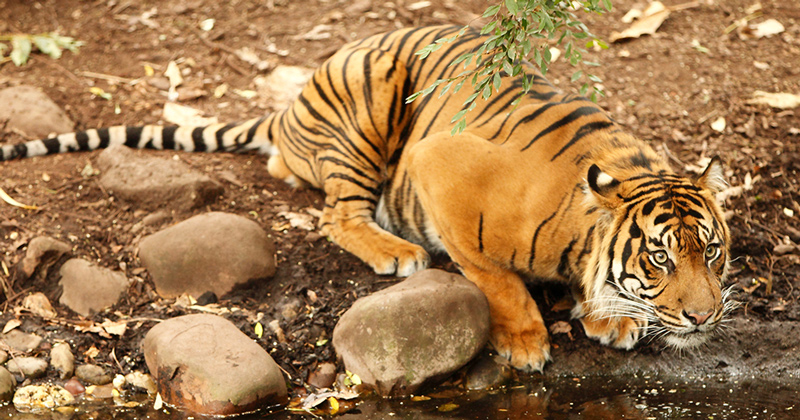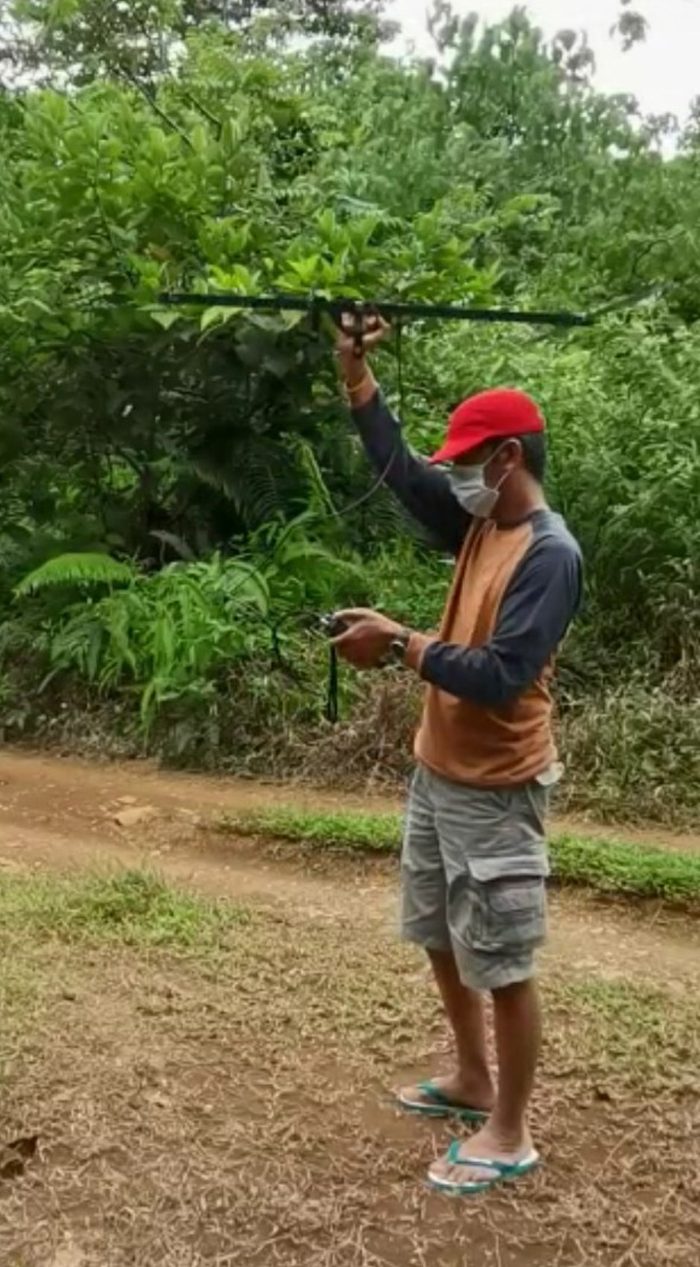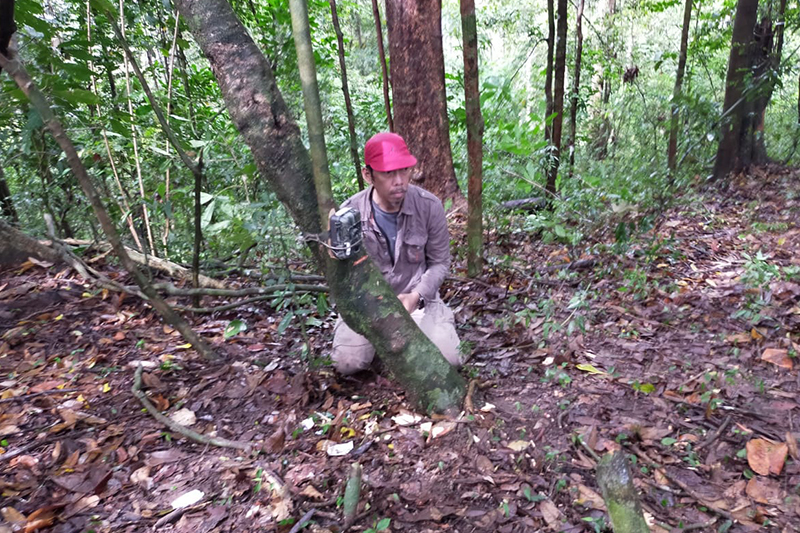


Earning his stripes
Photos by iStock and courtesy of Hariyo Wibisono July 09, 2021
New doctoral grad works to protect Sumatran tigers
The smallest of the remaining tiger subspecies, the Sumatran tiger’s stature and striping are perfectly adapted for life in the Indonesian forest. But these adaptations offer little protection from the threats of poaching or habitat loss due to illegal logging, agricultural encroachment and climate change. Scientists estimate that only 400 to 600 individuals remain in the wild and Sumatran tigers are currently listed as "critically endangered" on the International Union for Conservation of Nature’s Red List.
Hariyo “Beebach” Wibisono has worked to protect the Sumatran tiger for more than 20 years. In the spring of 2021, Wibisono earned a doctorate in entomology and wildlife ecology from the University of Delaware’s College of Agriculture and Natural Resources. He used data from his decades in the field to write and defend his dissertation on Sumatran tiger population distribution, the impact of anthropogenic disturbances on tiger and prey populations, and potential connectivity among heavily isolated Sumatran tiger habitats.
“I have been developing, managing, and leading several projects on Sumatran tiger conservation in priority tiger conservation landscapes for many years, specifically with regard to tiger and principal prey population monitoring, landscape management, and capacity development,” Wibisono said. “I used the datasets I collected from these field projects for my dissertation and, all together, these topics begin to fill the current knowledge gaps on Sumatran tiger conservation.”

To measure population densities, Wibisono led and supervised field surveys in three tiger conservation landscapes using camera traps. He also collated camera trap data from national and international partner organizations resulting in 29 datasets from 16 study sites collected between 1999 and 2017. Analyzing these datasets in a single multi-session model allowed him to estimate parameters across sites and test covariates for movement, detection and density. Wibisono notes that future island-wide tiger population assessments should use similar multi-session models with environmental covariates to accurately estimate population densities.
Additional collaborative tiger surveys in the Sumatran rainforest, led by Wibisono from 2007 to 2009, searched for the presence of tiger activity, prey activity, and human disturbances such as poaching and illegal logging. Wibisono and his conservation fellows collected data along transects in 389 grid cells, each 17 square kilometers in size, to estimate occupancy of tigers and prey in remaining tiger habitats. Unlike population density that refers to the number of tigers across a particular landscape, occupancy refers to the distribution of those tigers within the landscape. In 2011, his team and conservation fellows published the first ever Sumatran tiger occupancy study. Revisiting the prey and disturbance data from his earlier research, he reanalyzed the datasets to explore the effects of environmental and anthropogenic factors and noted that past and future conservation interventions must be evaluated based on their impacts on tiger occupancy.
Finally, Wibisono modelled landscape connectivity in human-dominated landscapes in West Sumatra Province. Applying maximum entropy modeling, he identified nine core tiger habitats and then developed a resistance layer to indicate landscape obstacles that tigers may encounter such as roads, elevation changes and various types of ground cover. Circuit theory and least-cost path analysis enabled him to predict structural connectivity between core Sumatran tiger habitats. It is his hope that Indonesia can implement a training program on similar habitat connectivity assessments for members of relevant government bodies so that connectivity analyses can be done for the remaining Sumatran tiger landscapes and appropriate preservation measures enacted.
"I was thrilled to have one of the world's top tiger conservation biologists join our Rare and Elusive Species lab at UD. Beebach's — now Dr. Wibisono’s — research is immediately actionable, providing the Indonesian government and NGOs with priority conservation targets and a better understanding of current Sumatran tiger populations,” said Kyle McCarthy, associate professor of wildlife ecology and Wibisono’s dissertation adviser.

Wibisono has dedicated his career to the conservation and preservation of his home country of Indonesia. He holds a bachelor of science degree in biology from Universitas Nasional in Jakarta and a master of science degree in wildlife and fisheries conservation from University of Massachusetts. As a budding conservationist, Wibisono realized that many Sumatran tiger protection projects were led by international organizations with few, if any, Indonesian scientists involved. In 2018, Wibisono established SINTAS Indonesia, a national non-governmental organization (NGO) focused on strengthening conservation of target species and habitats, developing national and international conservation networks, and mentoring the next generation of young Indonesian conservationists. With his UD degree now in hand, he plans to focus on making an even larger national impact through SINTAS Indonesia.
“I have always believed that Indonesian biodiversity is our national living treasure,” he said. “As an iconic species, the Sumatran tiger represents the overall biodiversity of Indonesia that we must save for the generations to come.”
Contact Us
Have a UDaily story idea?
Contact us at ocm@udel.edu
Members of the press
Contact us at 302-831-NEWS or visit the Media Relations website

